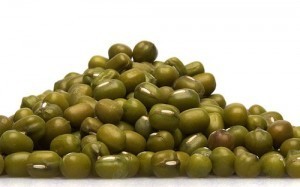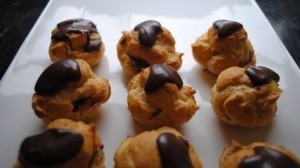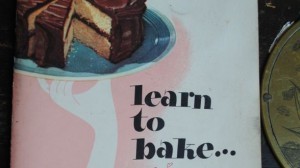Rachael Ray's Blog, page 52
August 9, 2013
Wine and Indian Food - Daring To Go Where Wines Don’t
Spicy food and wines are no strangers to controversy. Some feel they should be kept poles apart whilst others feel that at best, the only option for spicy foods is a sweet white wine. Recently, Sam Bhattia of Sufi wines and veteran Executive of Continental Airlines put this misconception to bed with his Mirza Ghalib wines. His wines provide a full range to pair with spice-bold cuisines and are non-discriminatory of color be it white or red. I recently caught up with him over a glass of his ‘oh-so good’ vino to find out just how he turned this industry on its head.
1) Tell me about your background? What inspired the line of wines?
I spent over 20 years traveling globally , while at Continental Airlines planning events and launching new destinations. During these global travels , the question of pairing wine with Indian cuisine, always came up. As I am passionate about wine and Indian cuisine, the idea of Mirza Ghalib was born. Wine is all about sharing with family and friends.
Throughout the world, wine naturally finds its place to accompany a meal. As afficionados of Indian Cuisine, we were never quite satisfied with the wines we would choose to accompany our dishes; the former never managed to fully complement the rich flavors of the latter.We therefore decided to do a little research on the subject. With the help of friends and professionals in both the cultural and wine sectors, we tasted a multitude of different wines, we still did not find what we were looking for. We thus decided to create such a wine; Mirza Ghalib. It complements spicy and complex flavors in one of two ways: First, wine’s acidity boosts the layers of flavors in a dish while softening its extremes, whether of body, richness, fattiness or spicy heat. Second, wine’s fruitiness or sweetness tones down spicy heat, letting the dish’s other flavors shine. Our wines’ range is the result of the work of a team of passionate wine lovers led by Frédéric-Jean Hoguet, wine expert and member of the prestigious Académie du vin de Paris.
2) If I am ordering your wine in an Indian restaurant - what wines should I look to?
We have 3 wines:
Mirza Ghalib Red Blend 2011/2012
Our signature Red wine with 50% Cabernet Sauvignon, 25% Merlot and 25% Syrah . The wine is well balanced with velvety smooth tannins. Main aromas of red mature fruits and spices.
Mirza Ghalib Viogner 2012
The wine is 100% Viogner with round, velvety, aromatic and dry with a final touch of Vanilla.
Mirza Ghalib Rose’ 2012
The Rose is 100% Syrah with fine aromatic expressions of fruits and flowers, such as black currant , cherry and violet.
3) Where is your wine made? Is there a particular reason why you chose those regions?
The wines are made in France, which is of course known for some of the best wines in the world . The specific region is called Pays D’ Oc in the Southern part of the country. We chose this region for the soil, climate and terrain. The Pays d’Oc boasts a rich and natural combination of steep slopes, hilly peaks, vineyards, garrigue vegetation and the sea, the Pays d’Oc territory is embraced by its Mediterranean climate that comfortably enfolds the vines with its dry and windswept soils. As grapes embrace the land from which they are grown, the grape varieties express themselves differently depending on the climate, exposure, relief, and soils. Pays d’Oc’s patchwork of wine-growing areas creates an expression of these grape varieties that is unique.
4) The industry has always steered spicy food eaters to Rieslings, Yet you offer reds as well. What should the goal be when pairing wine to spicy food?
The goal is using wine to balance the spicy flavors of the food, rather than, try to overpower them. Finding this perfect balance between food and wine results in an exemplary culinary experience.
5) In an Indian restaurant, what wines do you recommend with classic dishes?
Mirza Ghalib Red Blend - This signature blend brings out the spicy and rich flavors in North/ South Indian vegetarian, such as lentils. It is also great with non-vegetarian dishes, such as curries (Chicken Tikka Masala), assorted Kebabs and biryanis.
The Mirza Ghalib White - A Viognier grape that complements primarily fish dishes and lighter vegetarian fare such as Tikkas, Pakoras and Samosas.
The Mirza Ghalib Rose is great with both vegetarian and non-vegetarian dishes. It works well with Tandoori dishes (Indian Clay Oven), such as, Tikkas and Kebabs.
These wines are specially designed to find the perfect balance of tastes with these Indian dishes.
August 7, 2013
School is coming… Time to gear up! (Part 1)
Back-to-school sales have been going on since… something like May. But the sad truth is, it’s time to start paying attention to them.
And for families whose kids brown bag it, gearing up for another year in the classroom also means getting the goods needed to serve another 180 days in the lunch box trenches.
So here’s a quick primer on what’s needed to get lunch prepped and packed in a flash.
Lunch gear can be divided into four main categories. This is what you need to know about each.
Lunch boxes
A while back, lunch boxes came in two main varieties: brown paper bags and hard boxes. For kids, those hard boxes generally were festooned with various movie or cartoon characters.
It’s been a long time since lunch boxes were that simple. Today, they are made in numerous shapes, styles, sizes and substances. They can be hard plastic. Or metal. Or neoprene. Or vinyl. Insulated or not. Decorated or not. Many are inspired by Japanese bento boxes (many small compartments). Others are the size of coolers.
So how do you decide? For most lunch packers, a soft-sided insulated bag is the way to go. They come in many sizes, colors and designs; they are inexpensive; and most are rugged enough to withstand the sort of daily abuse kids dish out.
When selecting a soft-sided lunch bag, there are a few things to consider. First, make sure it is insulated. This helps keep foods — whether packed warm or cold — fresh and safe to eat.
Second, make sure it’s roomy. Nobody liked squashed sandwiches. So give yourself the space you need to pack an adequate lunch. This requires that you think about the sorts of foods you are likely to pack. A thermos takes up more space than a sandwich in a bag.
Third, aim for a lunch bag with two compartments. This makes it easier to pack hot and cold items (think a thermos of hot soup and a cup of cold yogurt) in the same lunch.
Thermoses
Thermos technology is way better than it was even just 10 years ago. Manufacturers not only have improved the designs (allowing foods to be kept hot or cold longer), they also got much better at telling consumers how the gear works. This is important information for keeping the lunches you pack safe to eat. We’ll get into that in more detail in Part 2 of The Lunch Gear Diaries (next week).
For now, what you need to know is that thermoses generally come in two shapes — tall and narrow (the traditional design), and short and squat. Ideally, you will want to get one of each.
Tall and narrow thermoses are best for thin liquids, such as smoothies or soups. Short and squat thermoses (sometimes called “food jars”) are great for thicker items, such as chili or meatballs or warm sandwich fillings.
When selecting a thermos, try to get the right size for the amount of food you will pack in it. You don’t want a cavernous thermos with just a bit of food inside — it won’t keep it as warm or cold. Also, buy only thermoses that include a thermal rating (an indication of how long they keep items hot and cold). Get as high a thermal rating as you can.
Food containers
These are the containers you actually put the food in (and which, in turn, are packed inside the lunch box). The cheapest and most convenient choice? Plastic bags.
Trouble is, the cost of those bags adds up over the course of the year (and the year after that and after that…). There also is the unpleasant environmental aspect of dumping all those bags into landfills. And the bags have their limits (ever try packing pudding in one?).
For an inexpensive upgrade, plastic food storage containers (the sort sold at grocers) are a solid choice. They come in all manner of shapes and sizes, are dishwasher safe (essential for just about any lunch gear), and are easily replaced when Junior inevitably loses one. The downside? They don’t last forever (they should be replaced at least every school year) and some people aren’t thrilled with plastic.
Ready to go high-end? Stainless steel. The web is awash in stainless steel food containers. They are pricier, but they will last forever. They also are available in more sizes, shapes and configurations than you thought possible. And they can really take a beating. My favorite brand? LunchBots. They are awesome. My dangerous and generally destructive 8-year-old son has never managed to do any harm to our collection.
Whatever variety you select for food containers, having multiples is key to keeping your sanity. That way forgetting to wash yesterday’s lunch containers doesn’t become a dishwasher crisis in the morning.
Water bottles
Like everything else, it’s best to have a spare. The headaches this saves on the mornings when you realize your kid left his at school… Well worth the cost to have an extra.
When it comes to water bottles, plastic isn’t always cheaper than stainless steel. Many stainless bottles are less expensive than plastic. And I find they last longer.
Plus, plastic water bottles usually aren’t insulated. And while not all metal bottles are, it’s easy to find plenty that are. Does it matter? Not always. But insulated bottles won’t sweat on hot days.
Next week — Part 2: Tips on how to use all this great gear!
J.M. Hirsch is the national food editor for The Associated Press. He blogs about the trials and tribulations of his son’s lunches at LunchBoxBlues.com. His upcoming cookbook, Beating the Lunch Box Blues, will be the first to be released by Rachael’s new publishing venture, Rachael Ray Books. Hirsch’s previous books include High Flavor, Low Labor: Reinventing Weeknight Cooking and Venturesome Vegan Cooking. He lives in New Hampshire with his son, wife, and too many cats.
August 6, 2013
SANITY SAVING TIPS TO BITE BACK AT BUGS (Say that three times fast!)
Swat, swoosh, smack and then those pesty bugs of summer are back again and again and again! But, with some simple tricks you can beat the summer”s bite of the most annoying and plentiful bugs!
SWATTIN’ TIP
Before I begin thought I’d share a fly swatting strategy particularly for those whom think their newspaper is the key:
· Contrary to what we might think using a newspaper or a towel is less effective then using a ventilated fly swatter or in my case, my grease splatter guard which collects more dust then grease. The reason is this crafty little bugs can detect the air pressure coming towards them if you use a newspaper or towel. Vented tools fool them since it reduces the air they feel. . . .But then we also have to deal with the fact that they have almost 360 degree peripheral vision so they see ye coming from all sides…Thus, we must swat fast and about 6 inches ahead of them!
·
BEES
Bees love food, floral designs and bright colors not good things for us since so many of our summer fun and fashion involve both. The good news is they also don’t sting you quickly unless you bother them which often happens just out of our panic at seeing them. Here’s how to bite back:
BLUE SKIES
o Paint your patio or porch ceiling sky blue. Bees will thing it’s the sky and not build a nest. Painting clouds is optional J
SODA POP
o Leave a couple inches of cola or any other sweet sugary soda in the bottle. Bees are a sucker for the sweet stuff and will fly in to take a sip but are too dumb to figure their way out!
BOUNCE
o Put a Bounce dryer sheet in your back pocket since the smell repels (how poetic!) You can also place one in the back of chairs and under your outdoor cushions. Some people rub them on their skin but I prefer not taking the chance if someone has an allergic reaction to ‘em.
MOSQUITOS
Mosquitos and summer go hand in hand or rather bite in bite. And though you can’t hope to annihilate them all you can keep them at bay. Here’s how:
BLOW: Mosquitos can only fly in still air so if you keep a fan on it will keep them at bay
FLOWER: Create a pretty border with Marigolds around patio, windows and doorways, patio table and in your bedroom to keep those suckers away. Mosquitos hate their smell-they have natural insect repellant called Pyrethrum found in other store bought varieties. Btw Marigold’s are also edible in case you’re looking for a new food group to try J
GARLIC: Garlic Powder or gloves have a built in natural repellent: sulfer so place around your patio to keep them at bay. You can also take garlic pills or wear a necklace made of them around your neck if you’re interested in keeping Dracula, friends and family away!
Fyi: smashed garlic applied to a bite will help take the sting and itch away
BOUNCE: Keep a Bounce sheet in your back pocket
DRAIN: Don’t leave still water around
FROGS ‘N LIZARDS J
ANTS
I try to imagine ants as entertaining like in Woody Allen’s 1998 movie ANTZ but alas that doesn’t stop them from annoying the heck out of me when I’m eating on my patio. So here are ways to stop them from invading your table and food:
LINE ‘EM UP!
Sprinkle the following around points of entry like doors and windows. When dining outdoors around eating areas since they are natural repellants and they ‘bug’ their feet!
Talcum powder
Chalk
Salt-it will make them so thirsty they’ll keep drinking ‘til they explode!
SINK OR SWIM
Fill plastic containers with water and put one under each patio/picnic table leg and chairs and they’ll be doing the backstroke vs dining back at the ole ant-stead!
FRUIT FLIES
Like the song “fruit fly don’t bother me’” that’s easier said then done.. . Particularly when one fruit fly can lay up to 400 eggs during their roughly 30 day life. Here’s a simple way to cut those baby makers lives and offspring short!
· WINE ‘N DINE EM:
o Give ‘em a lil Red wine or tequila-like fruit they’re attracted to the scent and will fly into the bowl leading them to a happy never after swan song. Cheers!
Julie Edelman aka The Accidental Housewife is the go to gal for easy; real life time, money, and energy saving tips that maintain our home, family and manicure. She appears regularly on the Today Show with Kathie Lee ‘n Hoda, Rachael Ray, and The Doctors. Julie has penned a New York Times best-selling book as well as The Ultimate Accidental Housewife: Your Guide to a Clean Enough House; contributes weekly for RachaelRay.com; is the sanity saving editor for Beautiful Design Made Simple Magazine; has a webisode series for Fox News Magazine, and hosts Julie’s Tips.
August 3, 2013
Updated Broccoli Salad
I was having a BBQ last weekend and instead of the usual potato or macaroni salad, I wanted to make something healthy and still cravable. I remembered my friend’s aunt used to make this Broccoli salad that loved, but of course because it contains bacon and mayo. Almost without thinking about it, I was able to make a healthy version. Instead of regular bacon, I used turkey bacon, which was even better because it isn’t greasy. Instead of sugar, I used honey, which adds a beautifully mellow flavor to the salad. And last, I used Vegannaise instead of Mayo, but I think this is a personal choice. I can’t imagine either is terribly healthy, so choose your poison and go for it.
Broccoli Salad
Ingredients
1 head broccoli, chopped into small bits
1/2 cup sliced almonds
4 slices turkey bacon
1 red onion, chopped
1/2 cup vegannaise or mayo
1 tablespoon honey
2 tablespoons lemon juice, plus the zest of a lemon
salt and pepper to taste
Preparation
Blanche the broc in boiling water for one minute, then transfer to a colander and let it cool. Meanwhile, cook the bacon until really crispy and then chop into bite sized pieces. Drain if you feel it is needed, but I usually don’t need to drain turkey bacon. Add the bacon and broc to a large bowl and throw in the chopped onion. In a clean frying pan, toast the almonds and add to the broc bowl. In a separate bowl, whisk the vegannaise, honey, lemon juice and zest until smooth and toss with the broccoli mixture. Add salt and pepper to taste. Refrigerate until ready to serve. The colder the better.
August 1, 2013
An evening with author Elin Hilderbrand - a writer for foodies
Two of my favorite pastimes are reading and cooking (ok, make that 3 - add eating to the list) - and one of my favorite authors is Elin Hilderbrand. Her novels are the perfect summer beach reads - pure escapism. All of her books are set on Nantucket - where she lives year-round - and she literally takes you there, she is so descriptive. I have never actually been to Nantucket, but thanks to Elin I feel as if I have. Not only have I been transported to the island, I have eaten the food there - in restaurants, at parties and in the beach homes of Elin’s major characters, who are often caterers, restaurant owners, chefs, or fantastic home cooks.
I had read all of Elin’s 12 books and knew her latest book - Beautiful Day - was due to come out this summer. I had it pre-ordered on Amazon. Honestly, her books are so addictive I have read many back-to-back and it can be a problem for my family when I start a new one - they lose me for a day or two.
I was beside myself when earlier this summer I was with a friend and her sister-in-law mentioned she was hosting a book club to discuss Beautiful Day and Elin Hilderbrand was going to be there. I almost fell off my chair. I invited myself on the spot and put the date in my calendar - the countdown began. Of coure my first question was “what food will you serve” since food figures so prominently in Elin’s books. The setting of Beautful Day is a Nantucket wedding, so the hostess served the food that was served at the wedding in the book - brilliant. We had chicken skewers with a peanut sauce, grilled shrimp, mini beef wellingtons, blanched asparagus with a cold herby sauce, BLT green salad in mason jars (so cute!), and wedding cupcakes.
It was truly a special night - here is the group with the author (holding her new book Beautiful Day).
We had a lively discussion about the book (note to skeptics - yes, book clubs DO discuss their books) and Elin answered questions both about Beautiful Day, including the character she relates to the most (Margot), would she ever consider a setting other than Nantucket for upcoming books (maybe?), her writing process (she writes one book per year, long hand), and upcoming books (she has one in the can, and a Christmas trilogy coming up).
It was a memorable night all around. If you are looking for a perfect summer book, I highly recommend Beautful Day. Two thumbs up.
Summer Beauty Fix-Its
Summer is hot and sweaty for everyone, and even I notice more frizz in my hair and perspiration on my brow! Luckily, there are plenty of things to stop you looking as hot as you feel. I’ve picked up three handy tips from makeup artists over the years, and am sharing them with you below!
For greasy looking skin…
Begin your makeup routine with a mattifying primer. A primer will help your makeup stay in place and reduce the amount of oil your skin produces during the day. Wear your hair down? Leaving strands to hang around your face (and bangs in particular), can cause greasy foreheads, which leads to clogged pores, which leads to acne! Carry blotting papers around with you to help reduce shine.
To Tame your Strands:
Your hair can go two ways in summer. It can get dirtier more quickly due to the heat, or summer showers can make it frizzy. If you’re the greasy kind, look at adding a dry shampoo to your medicine cabinet. A few spritzes will absorb any oil and save you a wash. For frizzy ladies, look for a de-frizzing serum.
To Stop Your Makeup From Running
Heat makes you sweat, and sweat causes your makeup to run, so how do we stop it? In addition to using a primer (see my first tip), opt for powder or cream based products instead of liquids. Use a pressed powder compact instead of liquid foundation, lip stain instead of lipstick, and finish everything off with a dusting of translucent powder.
To Keep You Cool
Keep cool by storing your beauty products in the fridge! Facial mists, eye cream and moisturizer can give you relief when applied to warm skin. Also look for products with cooling ingredients. Think cucumber extract, aloe, green tea, and marine botanicals to help soothe and calm flushed skin.



No-Cooking, Fat Free Lentil Salad
The recent 90-degree days have made me challenge my habitual need for a soupy lentil stew. As I stared down at my green lentils submerged in water, the thought of hot lentils was fast losing its appeal. But they were in water since the night before and I had to to do something with them. It was then that my mind cast back to my mum’s lentil salad.

Photo by India mart
They certainly had the texture fit for a salad - tender without being soft and starchy. The best part: NO cooking required. They softened in my sleep – literally. As the lentils lay in water over night, they became hydrated and perfectly edible.
I tossed my lentils with sliced onions, tomatoes, fresh chili and a hit of fresh lemon (I did serve mine garnished with crushed peanuts, but this dish is just as good without them). My lentils couldn’t be more weather-ready and my palate was certainly pleased to receive these cool ingredients with oodles of pop.
Recipe for No Cooking, Fat Free Lentil Salad
Ingredients
1 cup mung-bean lentil (green lentil) – if using red lentils, only soak for 2 hours
5 cups water (for soaking)
2/2 a Vidalia onion, thinly sliced
1 tomato, thinly sliced
1 green chili, finely chopped
Juice of 1 lemon
Handful of cilantro with stems, washed and broken in half
Salt and pepper to taste
Method
1) Wash lentils thoroughly, soak over night (about 8 hours). Wash again under running water and drain well
2) Combine with remaining ingredients. Serve chilled
Saira Malhotra, is of British–Indian descent and is a chef, food writer and cooking instructor based in New York City. Raised in Hounslow, U.K, or rather ‘Little India’, where the air is aromatic with roasted spices, little did Saira know these moments would follow her from being a student in France and Italy to residing in NYC with her husband and kids and parlay themselves unexpectedly in to a culinary career. She is a graduate of the International Culinary Center in New York City. Come visit her at her food blog: www.passportpantry.com where she shares approachable and international recipes
July 31, 2013
Grilling 109: The Beginnings of Barbecue
This series is all about grilling, and grilling is all anybody needs. The holy trinity of meat, wood, and fire are more than enough to satisfy any person. Really. I love barbecue as much as anybody. And I love cooking it. But it’s not for everybody. I urge you, don’t start getting into barbecue. Stop now. Go make a nice steak or some pork chops. You can get all the barbecue you want at a barbecue restaurant.
You’re not listening, are you?
I understand. Having come this far with grilling, you can’t help but wonder what would happen if the meat was bigger, and sat in the cold zone faster, and all the kinds of rubs and mops and sauces and brines that you could come up with. When I lived in Corning, New York and worked for the glass museum, my whole world revolved around these kind of questions. And you know what? If I ever have a house again with a backyard, it will revolve around them again. Because barbecue is awesome. It’s like the next step in primate evolution. But it really is harder than it looks. So let’s see what we can do to prepare you for that Great Leap Forward.
1. Don’t buy any new equipment. Don’t buy a smoker. Don’t buy an injector. Don’t buy a wireless thermometer. Don’t buy foil. I know that in my previous lesson I spoke glowingly of ceramic cookers like the Big Green Egg or the Komodo, but they make barbecuing too easy, in my opinion. That’s why I kind of hate them. You might as well just get it from a restaurant when you cook in those things. Master the art of doing it in a Weber, and you will understand what you are doing later on when you find yourself using more sophisticated equipment. Starting barbecuing with an Egg is like learning to drive on the space shuttle. If you do want to buy something, buy a device called a Smokenator, an insert for your Weber grill, about which more later.
2. Start out small. Barbecue can be done really well on a kettle grill, but it has to be smaller pieces that can cook in a few hours. So think chicken quarters and spare ribs. You know what really works well too? Johnsonville bratwurst. I can’t tell you how many barbecues those things saved when I had ruined the ribs.
3. You are going to want a large (20 lb) bag of charcoal at minimum, and a 10 lb bag of wood chunks. In addition, plan on having some kind of spritzer bottle around, and a bowl big enough to eat cereal out of. This will be for your mop.
4. You will be familiar, after all this time, with the concept of a cold zone. Just to remind if, in case you’ve forgotten, this is the part of the grill that doesn’t have hot coals under it. When barbecuing, you want to have as big a cold zone as possible. This is where the Smokenator comes in. The Smokenator is a metal insert that fits in the side of the Weber and holds pieces of smoldering wood. I will say that I never had a Smokenator when I learned the trade. I just threw wet chunks of wood on the coal from time to time, along with more coals. Generally, this needs to happen about every 25 minutes or so.
5. Get some store-bought sauce you like and pour some in a bowl. Thin it out with some beer. Add in a small amount of your favorite spice, as long as your favorite spice isn’t mace or something. I like pairing a sweet sauce with something like allspice or ginger. But you can figure that part our for yourself. Every time you add wood and coal, brush some on. You are building up flavor levels and keeping the meat moist.
Expect your first chicken or ribs to come out bad. Something will go wrong. That’s OK. That’s why they invented Manager’s Specials. Just keep trying. You aren’t looking to master barbecue; you’re looking to understand it. And if you get some succulent, smoky, pink-barked ribs or piquant chicken out of the deal, you are far ahead. Wonderful things lay ahead for you.
July 30, 2013
Easy Summer Eats: Chicken And Zucchini Bolognese
My garden is bursting with zucchini right now. I almost can’t keep up with the abundance we are blessed with this year but I have been enjoying finding new ways to use them. Today I decided to make a quick chicken and zucchini bolognese and it turned out delicious. Using chicken instead of beef which traditional bolognese calls along with zucchini for made this dish very light and refreshing, perfect for summertime eats.
It takes no time to throw together and is filling but not at all heavy or rich. The end result is a dish that you will want to make over and over again. Feel free to add in whatever other veggies you enjoy because when it comes to veggies in this dish, the more the merrier. Carrots and summer squash would also be really lovely in this recipe. Play around and see what other combos work for you.
Chicken and Zucchini Bolognese
Serves 4-6
Ingredients:
1 lb pasta (I used spaghetti)
2 tablespoons olive oil
1 large zucchini, chopped small
1 small onion, diced small
1 clove garlic, minced
1lb ground chicken or turkey
1 (15 ounce) can of crushed tomatoes
1 tablespoon tomato paste
2/3 cup water
1/4 cup basil
Instructions:
1. Heat olive oil in a large skillet over medium heat. Add in zucchini, onions and garlic and cook until vegetables begin to get tender, about 8-10 minutes. Add the ground chicken to the pan and switch pan to high. Cook, moving the chicken around, breaking it up with a wooden spoon so that it cooks evenly. Stir in tomato paste, sauce and water and cook on medium-high, stirring occasionally until sauce reduces slightly and chicken is cooked through, about 20 minutes.
2. While sauce is cooking heat a large pot of salted water over medium high heat. Cook pasta according to package directions for al dente. Top with sauce and freshly torn basil and serve.
Chocolate Tea Puffs
Last summer while we were on vacation in New England my husband and I were strolling through an antiquing section of this tiny town and I came across a basket of ancient paperback cookbooks for 25 cents each. They are hilarious and I have made quite a few recipes from my favorite - ”learn to bake….you’ll love it!”
The pamphlet was published in 1947 by General Foods and must have been a gift with purchase with Swans Down cake flour (”The first cake flour!”) and Baker’s unsweetened chocolate (”PURE” chocolate) - the pamphlet has lots of exclamation points and copy extolling the virtues of these two products. There are recipes for many oldies-but-goodies that you really don’t see much anymore - Soft Molasses Hermits, Party Butter Cookies, Favorite Icebox Cookies, Butterscotch Nut Rolls, and a new one to me - Quick Sally Lunn - just to name a few. I will defnitely post the results of some of these recipes in the future. No bells and whistles here - just basic ingredients and a little technique.
I have made these Chocolate Tea Puffs multiple times and they are easy but impressive. They are really profiteroles with a chocolate whipped cream filling and I added a chocolate ganache topping. As an alternative, you could defintiely use the shells to fill with ice cream and top with the ganache or hot fudge for a special dessert.
Chocolate Tea Puffs (adapted from “learn to bake…You’ll love it!”)
(click here for printable recipe)
Ingredients:
For the tea puffs:
1 cup sifted flour
1/2 cup shortening (I used Crisco)
1 cup boiling water
4 eggs
pinch of salt
For the cocoa whipped cream:
2 tablespoons unsweetened cocoa
2 tablespoons sugar
pinch of salt
1 cup heavy cream
For the chocolate ganache topping:
8 ounces chocolate chips
3/4 cup heavy cream
2 tablespoons light corn syrup
Directions:
Preheat oven to 450 degrees F.
Make the tea puffs: Combine water and shortening in a sauce pan over medium low heat and bring mixture to a boil. Sift flour into boiling mixture. Cook and stir constantly until mixture leave sides of pan in one smooth compact mass. Remove from heat.
Add eggs, one at a time, beating very thoroughly after each addition. Add salt. Beat steadily with a wooden spoon until mixture looks satiny and breaks off when spoon is raised.
Drop from teaspoon on a parchment-lined cookie sheet and bake for 15 minutes, then decrease heat to 350 degrees F and bake for 10 minutes longer. Let cool.
Make the cocoa whipped cream: Mix together cocoa, sugar and salt. Add cream gradually, stirring to keep mixture smooth. Chill 1 hour, then whip with an electric beater until stiff.
Make the chocolate ganache topping: Place chocolate chips in a large heatproof bowl. Bring cream and corn syrup just to a boil in a saucepan, stirring to combine. Pour over chocolate and let stand 10 minutes. Whisk until smooth and shiny. Use immediately.
To fill the puffs, with a sharp knife, make a slit in one side of each puff and fill with cocoa whipped cream (less is more). Top with a dollop of the ganache (you will have leftover ganache - not a bad thing). Serve immediately or store in fridge.
Plan B Mom is a mostly-stay-at-home mom of 3 who works from home but sees her main job as managing her family. When she is not taking care of her 13-year old and 11-year old girls, 9- year old son, yellow lab, and husband - she is baking, running, carpooling, or helping with homework. She tries to stay organized to keep life running smoothly - or at least catastrophes at bay. Follow her on Twitter at @PlanBMom.
Rachael Ray's Blog
- Rachael Ray's profile
- 296 followers









